Contents
The humpback tinder fungus belongs to the Polypore family. Among mycologists, such synonymous names of tree fungus are known: Trametes gibbosa, Merulius, or Polyporus, gibbosus, Daedalea gibbosa, or virescens, Lenzites, or Pseudotrametes, gibbosa.
In popular literature, the scientific name Trametes humpback is common. The definition of the species arose due to a medium-sized tuberculate elevation at the top of the fungus.
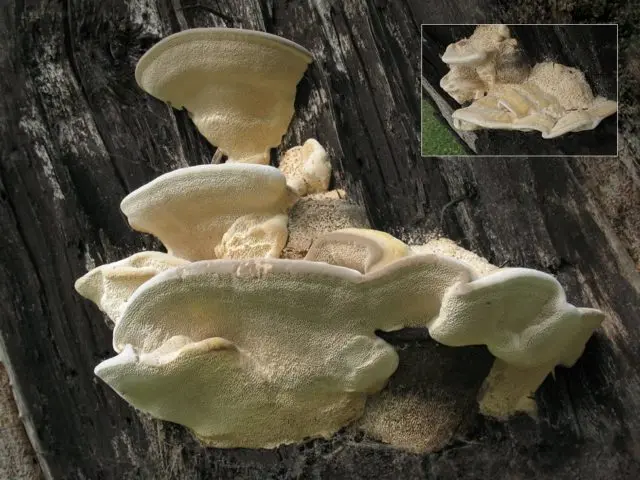
The spore-bearing tubes are located radially from the base
Description of humpback tinder
In annual fruiting bodies, cantilever caps are sessile, semicircular or almost round, 3-20 cm wide. Tinder fungi grow singly or in small families, attached to wood with a wide base, no legs. Tinder fungi grow up to 6,5 cm in thickness. Flat caps are humpbacked due to a tubercle rising at the base. Young skin is velvety, white or grayish. Then, various in color, but darker concentric stripes from olive to brown tones are formed. As the humpback tinder fungus grows, the skin becomes smooth, without pubescence, of various creamy-ocher shades.
A feature of the humpbacked species is that often the fruiting body is overgrown with epiphyte algae, which take food from the air. The edge of the fruiting body is also brown or pink, pubescent. Becomes sharp with age. Dense, white or yellow flesh consists of two layers:
- soft, fibrous, gray above;
- tubular below – cork, whitish.
Mushroom is odorless.
Spores develop in tubules of white, yellowish or yellow-gray color. The depth of the tubes is up to 1 cm, the pores are slit-like, the spore powder is white.
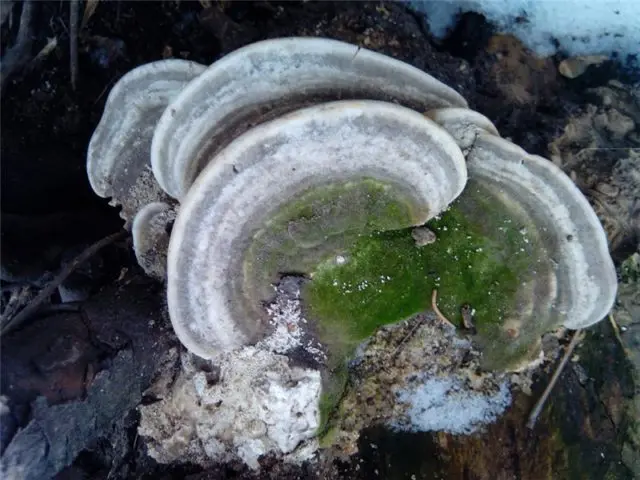
From a distance, mushrooms may appear green due to algae.
Where and how to grow
The humpback tinder fungus is a saprotroph that grows more often on fallen wood in the temperate zone of Eurasia and North America, prefers a warmer climate. Fruiting bodies of the humpback species are found on hardwoods: beech, hornbeam, birch, alder, poplar and other trees.
But sometimes saprophytes destroy living wood, causing white rot, which spreads quickly. The humpback tinder fungus begins to form from mid-summer, grows until the first frost. In favorable conditions, it is preserved in winter.
Is the mushroom edible or not?
Poisonous substances were not found in the fruiting bodies of the humpback tinder fungus. But the mushrooms are inedible due to the very hard cork tissue, which becomes stiff after drying.
Twins and their differences
There are several inedible tree fungi similar to the humpback species:
- an elegant tinder fungus, which is rare in Our Country and much smaller in size;
- hard-haired trametes;
- daedalea Dickens, common only in the Far Eastern forests;
- birch lenzites.
A special characteristic of the humpback tinder fungus is the placement of slit-like pores that diverge radially from the base to the edge of the cap. In addition, there are other signs:
- villi are not visible on the velvety skin;
- pores rectangular, creamy yellow;
- the tubular layer in adult fungi is often labyrinthine.
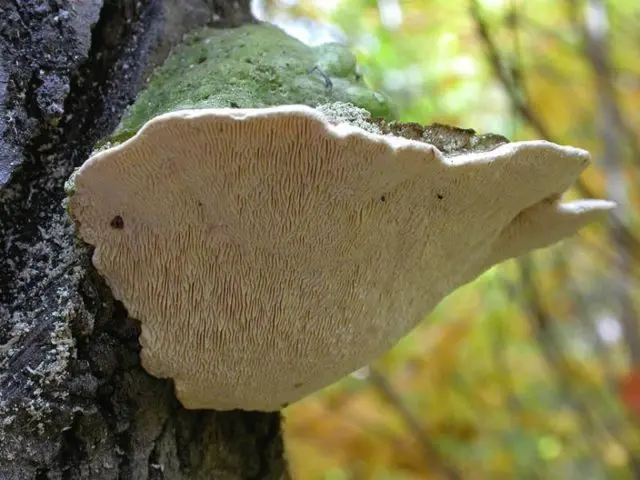
In the graceful trametes, the pores are similar in shape, but diverge in the form of a fountain from several central points.
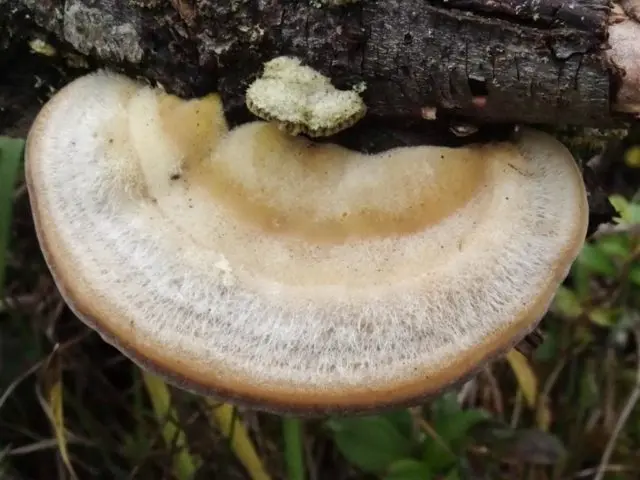
The rough-haired trametes is distinguished by a well-defined pubescence of the cap and elongated pores.
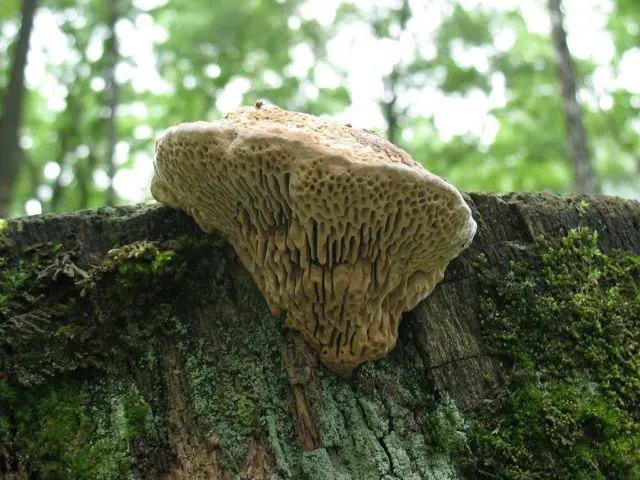
Daedalea has creamy brown flesh, much darker than Humpback Trametes.
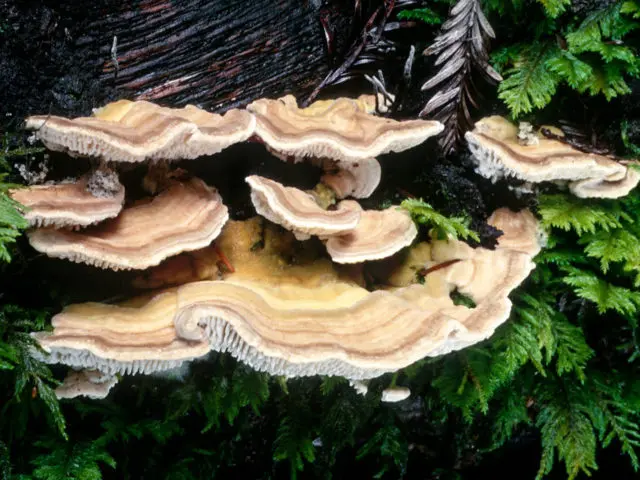
The bottom of the lensites is lamellar
The use of humpback trametes
When studying the fruiting bodies of this type of tinder fungus, substances were found that contribute to the cessation of inflammatory processes and prevent the development of viruses, as well as an antitumor effect. Connoisseurs of traditional medicine use natural raw materials for bacterial infections and overweight. Masters of folk crafts from the hard pulp of tree mushrooms create small decorative crafts for the interior and landscape and park architecture.
Conclusion
The humpback tinder fungus is often found in forests. Although the fruiting bodies are inedible due to their tough flesh, they are sometimes used for decoration. On living trees, fungi cause significant harm, causing white rot.









